Learned students have attempted to fix the date – as if dates mattered! – when the Hiramic Legend first made its appearance in Freemasonry.
Feature image: Hiram Abiff at the construct King Solomon’s temple
Their conclusions are more negative than positive, and none has gone behind the fact that in one form or another the Hiramic Legend is among the oldest as it is among the dearest myths of the human race.
One may agree that documentary evidence does not put the legend of the martyred master workman into the third degree prior to 1725 and still see in it a recasting of the race-old drama of man’s hope for immortality.
A dozen or more suggestions have been made by Masonic students as to what the legend means.
Some take it literally even though the Old Testament says nothing of the death of that Hiram which Solomon fetched out of Tyre who “wrought all his work.”
Others believe it is another way of telling the story of Isis and Osiris – itself a legend which could hardly have been foisted on the people full born from the brain of some clever priest but must have been an heritage from the Hyksos, or even earlier inhabitants of Egypt.
Fancifully, some see in it a modern version of the death of Abel at the hands of Cain, and of course thousands visualize it as the death and resurrection of the Man of Galilee.
Search the Great Light; you will find no account of the tragedy of Hiram Abif.
You will learn of Hiram, or Huram. If you delve deeply enough in Hebrew you will learn that “Abif” means “his father” which may indicate another Hiram, a son.
Modern scholarship translates Hiram Abif as “Hiram, my father” meaning a Hiram looked up to, venerated, given a title of honour, as the father of a tribe, the father of an art, the father of the sacred vessels of the Temple.
But of the Three, the tragedy, and the Lost Word, the Old Testament is silent.
Nor will you find in secular history any account of the drama of Hiram.
For its truth you must delve into the myths and legends and fairy stories in which the race has half concealed, half revealed, those truths which do not bear telling in plain words.
Is there a Santa Claus? For six years old there is. For his elders Santa Claus is a means of telling a beautiful truth in terms which six years old can understand.
Is the legend “true”? What is meant by “true” ? If the translation of “true” is “historically accurate,” obviously neither Santa Claus nor Hiram Abif is “true.”
But if “true” means “containing a great truth,” then both the myth of the Yuletide Saint and the Legend of the Master Builder are true in the most real sense.
Raised to the Sublime Degree, many men see in the living, the dying and the raising of the Master only a literal drama, designed to teach the virtues of fortitude and inflexible fidelity.
For those whose ears hear only the melody and are deaf to harmonies, for those whose eyes are so blinded by the sunset as not to see the colours, this is good enough.
Yet any literal interpretation of the legend and our ceremony which exemplifies it misses its heart.
The Legend of Hiram Abif is at once the tragedy and the hope of man; it is virtue struck down by error, evil, and sin, and raised again by truth, goodness, and mercy.
It is the story of the resurrection of that “which bears the nearest affinity to that supreme intelligence which pervades all nature.”
It is the answer to Job. It is at once the beginning of the even more sacred legend – of that which was lost – and the assurance that at long last he who seeks shall find.
How long is a rope? A silly question! It can be answered, presumably, if one can find one end and measure it to the other.
Suppose the rope has only one end? Sillier and sillier! But if two ends are true of a rope, are they true of space and time and eternity?
If time has a beginning, it has an ending. If space commences somewhere, there also will be its end to be found. If eternity has a beginning, it is not eternal!
Here is the shock, the surprise, and the glory of the third degree.
It presents us with eternity in the midst of life. It pushes back the confines of our little dimensions, our tiny measurements of time, our small comprehension of space and shows us that we enter eternity at neither birth nor death.
We have always been in eternity if we are in it at all. Hiram Abif was gathered to his fathers when the selfishness and sin of misguided men struck him down.
But they were powerless against the Paw of the Lion and the might of Freemasonry.
Each of us is born, lives his short life and, wearing his little white apron, is laid where our forefathers have gone before us.
The drama of the third degree assures us that the life from birth to death and including both is but an episode, a single note in the great symphony.
![]()
The Hiramic Legend is the glory of Freemasonry; the search for that which was lost is the glory of life.
Never may we find it here. You shall gaze through microscope and telescope and catch no sight of its shadow.
You shall travel in many lands and far and see it not. You shall listen to all the words of all the tongues which all men have ever spoken and will speak – the Lost Word is not heard.
Were it but a word, how easy to invent another! But it is not a word, but The Word, the great secret, the unknowableness which the Great Architect sets before his children, a will o’ the wisp to follow, a pot of gold at the end of the rainbow.
Never here is it to be found, but the search for it is the reason for life.
The Sublime Degree teaches that in another life it may be found. That is why it is the Sublime Degree.
Article by: Carl H. Claudy
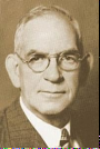
Carl Harry Claudy (1879 – 1957) was an American author, magazine writer, and journalist for the New York Herald.
His association with Freemasonry began in 1908, when, at the age of 29, he was raised a master Mason in lodge Harmony No. 17 in Washington, DC. He served as its master in 1932 and eventually served as Grand Master of Masons in the District of Colombia in 1943.
His Masonic writing career began in earnest when he became associated with the Masonic service Association in 1923, serving as associate editor of its magazine, The master mason, until 1931.
Under his leadership the service Association was brought to a place of predominance through his authorship and distribution of the short talk bulletin which made his name familiar to virtually every lodge in the country.
 Old Tiler Talks - Eyes Lifted High The Old Tiler Talks first published in 1925, by Carl Claudy, is a series of short anecdotal stories told in the setting of a new member asking an old tiler for his opinion on various masonic topics. These short articles are still very relevant, 100 years on, and hopefully provide some insight to new members today. |
 Old Tiler Talks - Masonic Libraries The Old Tilers talks first published in 1925, by Carl Claudy, is a series of short anecdotal stories told in the setting of a new member asking an old tiler for his opinion on various masonic topics. These short articles are still very relevant, 100 years on, and hopefully provide some insight to new members today. |
 Old Tiler Talks - So Many Rascals "Why are there so many rascals in the Fraternity, and why don't we turn them out?" a new member voiced to the old tiler for his opinion. These short articles are still very relevant, 100 years on, and hopefully provide some insight to new members today. |
 Old Tiler Talks - The Greatest Work The Old Tiler asked, "what is the greatest work of Masonry?" The New Brother sat by the guardian of the door and pulled out his cigar case. - Another instalment of wisdom by Carl Claudy, The Greatest Work |
 Old Tiler Talks - Why Men Love Freemasonry The 'Old Tiler Talks' first published in 1925, by Carl Claudy, is a series of short anecdotal stories told in the setting of a new member asking an old Tiler for his opinion on various Masonic topics. These short articles are still very relevant, 100 years on, and hopefully provide some insight to new members today. |
 Old Tiler Talks - Seeking a Little Light The Old Tilers talks first published in 1925, by Carl Claudy, is a series of short anecdotal stories told in the setting of a new member asking an old tiler for his opinion on various masonic topics. These short articles are still very relevant, 100 years on, and hopefully provide some insight to new members today. |
 The new mason laments that practically speaking, Masonry is a failure, and it depresses me … Masonry cannot be a failure, because men fail as Masons. The Old Tilers talk by Carl Claudy |
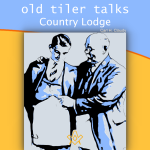 Old Tiler Talks - Country Lodge A lesson in the importance of an open mindset to observe, not to judge, but to learn and accept that we can achieve the desired outcome employing a different process. by Carl Claudy |
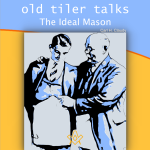 Old Tiler Talks - The Ideal Mason "What's your ideal of Freemasonry?" asked the Younger Mason - A short anecdotal story told in the setting of a new member asking an old tiler for his opinion on various masonic topics by Carl Claudy |
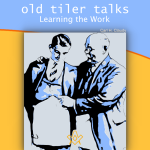 Old Tiler Talks - Learning the Work A short anecdotal story told in the setting of a new member asking an old tiler for his opinion on various masonic topics by Carl Claudy |
 Masonic first appointments and promotions might appear to be inequitable for one point a view, but some times, one point does not show the whole picture. A perfectly articulated story by Claudy, we should not compare one persons abilities with another. |
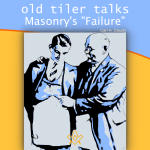 Old Tiler Talks - Masonry's 'Failure' Masonry fails because it doesn’t interest men sufficiently to make them practice what they preach. A perfectly articulated story by Claudy Masonry does not fail men. Men fail Masonry. Masonry has the teachings. |
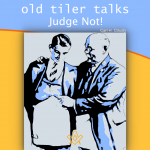 A perfectly articulated story by Claudy reminds us of a lesson from the Second Degree Charge; in the decision of every trespass against our rules, judge with candour, admonish with friendship, and reprehend with mercy. |
 Old Tiler Talks - A Masonic Speech A Masonic Speech - I can tell you the essence of appeal. It is drama. If you want your hearers to hang on your words, dramatize your subject |
 Old Tiler Talks - A Mason's Christmas A Mason's Christmas - Do you believe in Christmas celebrations should be held by the lodge ? Should members be asked to contribute to one and engage in Christmas festivities ? What is the old tilers take on this ? |
 Advertising - We would do more good in the world if we advertised ourselves more… Why ? |
 Uncover the mystery behind one of the oldest and most widespread symbols denoting God. |
 Do you want to discover the originals of the five points of fellowship ? |
 The mystery behind the two great pillars that stood at the porchway entrance of King Solomon Temple |
 Three numbers, what are their masonic significance? Pythagoras has something to say about them |
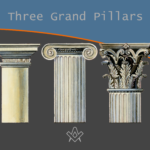 What are the Three Grand Pillars ?, wisdom, strength, and beauty - then later we hear of the Doric, Ionic, and Corinthian columns |
 This emblem contains more real food for thought than any other in the lecture of the Sublime Degree. |
 The Hiramic Legend is the glory of Freemasonry; the search for that which was lost is the glory of life |
 How are the Fellowcraft's five steps connected the five senses of human nature |
 How to explain the principle tents of the craft to a newly made brother |
 What are the lesser lights and where are they placed on our Lodges |
 Like so much else in Freemasonry the Middle Chamber is wholly symbolic |
 In the true sense of the words Freemasonry is not a secret society but a society with secrets. |
 Three Great Lights – the Volume of the Sacred Law, the Square, and the Compasses |
 Entered Apprentice Lambskin Apron; More ancient than the Golden Fleece or Roman Eagle, more honourable than the Star and Garter ... |
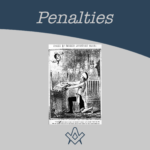 To the initiate, the penalty in his obligation comes with a shock of surprise and sometimes consternation. |
 What is a point within a circle |
masonic knowledge
to be a better citizen of the world
share the square with two brothers

click image to open email app on mobile device








